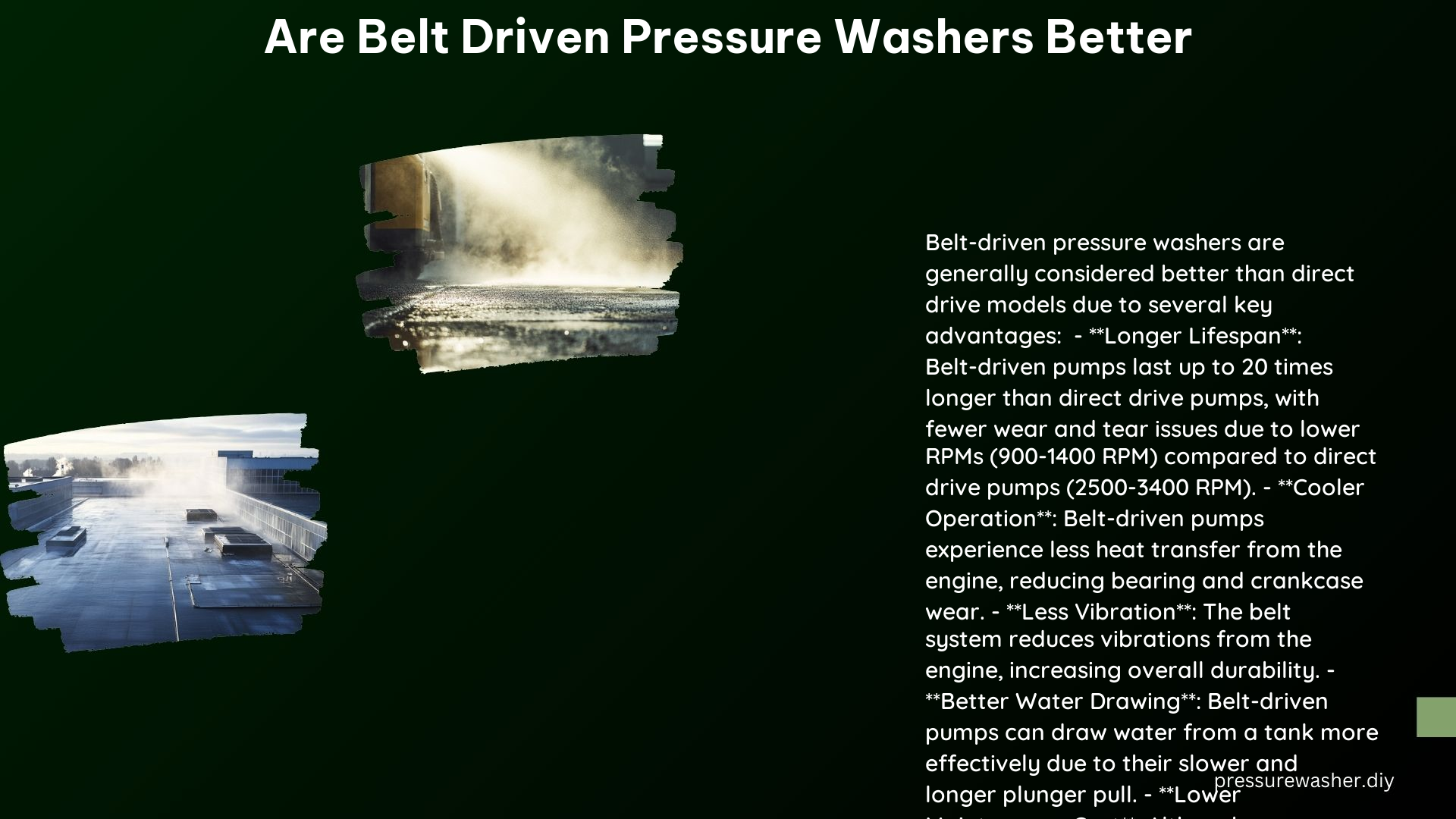Belt-driven pressure washers are generally considered superior to direct drive pressure washers due to their enhanced durability, improved performance, and reduced engine stress. This comprehensive guide delves into the technical specifications and advantages that make belt-driven pressure washers the preferred choice for heavy-duty and commercial applications.
Durability and Longevity
One of the primary advantages of belt-driven pressure washers is their exceptional durability and longevity. These systems feature pumps that can last up to 20 times longer than their direct drive counterparts. This remarkable lifespan is attributed to the lower rotational speeds (typically 900-1400 RPM) and reduced heat transfer from the engine.
The lower RPMs and indirect connection to the engine result in less wear and tear on the pump and engine components. This translates to longer bearing and crankcase life, ensuring that belt-driven pressure washers can withstand the rigors of heavy-duty use for an extended period.
Reduced Wear and Tear

The lower RPMs and indirect connection to the engine in belt-driven pressure washers also contribute to reduced wear and tear on the overall system. The decreased vibrations and heat buildup associated with this design lead to fewer maintenance requirements and a more reliable performance over time.
Direct drive pressure washers, on the other hand, operate at much higher RPMs (around 3400 RPM), which can accelerate the wear and tear on the pump and engine components. This increased stress can result in more frequent breakdowns and a shorter overall lifespan for the equipment.
Improved Performance
Belt-driven pressure washers excel in their ability to draw water easily from a tank, making them more suitable for heavy-duty and commercial applications. This is due to their higher “Maximum Inlet Vacuum” specification, which allows them to pull water from a tank more effectively.
The indirect connection between the engine and pump in a belt-driven system also contributes to improved performance. The reduced stress on the engine allows it to operate at its optimal efficiency, delivering more power to the pump and enhancing the overall cleaning capabilities of the pressure washer.
Reduced Engine Stress
The belt drive system in a pressure washer reduces the weight and stress on the engine, as the pump is not directly mounted to the engine. This design feature helps to prolong the engine’s life and maintain its performance over time.
In a direct drive system, the pump is directly connected to the engine, which can place additional strain and wear on the engine components. By separating the pump and engine in a belt-driven system, the engine is able to operate more efficiently and with less stress, leading to improved longevity.
Portability and Maintenance
Belt-driven pressure washers are also more durable when it comes to portability and transportation. The independent mounting of the pump and motor in these systems makes them less susceptible to damage during travel or relocation.
Additionally, belt-driven pressure washers generally require less maintenance time compared to direct drive systems. The reduced vibrations and heat buildup in the belt-driven design translate to fewer adjustments and repairs needed over the course of the equipment’s lifespan.
Cost of Ownership
While belt-driven pressure washers may have a higher upfront cost, their longer lifespan and reduced maintenance needs result in a lower overall cost of ownership over time. The increased durability and reliability of these systems can offset the initial investment, making them a more cost-effective choice for heavy-duty and commercial applications.
In contrast, direct drive pressure washers may be more affordable upfront, but their shorter lifespan and higher maintenance requirements can lead to a higher total cost of ownership in the long run.
Technical Specifications
To further illustrate the differences between belt-driven and direct drive pressure washers, let’s examine some key technical specifications:
| Specification | Belt-Driven Pumps | Direct Drive Pumps |
|---|---|---|
| RPM | 900-1400 RPM | 3400 RPM |
| Heat Transfer | Lower heat transfer from engine | Higher heat transfer from engine |
| Maximum Inlet Vacuum | Higher “Maximum Inlet Vacuum” spec | Lower “Maximum Inlet Vacuum” spec |
These technical differences highlight the advantages of belt-driven pressure washers in terms of reduced wear and tear, improved performance, and enhanced durability.
Conclusion
In summary, belt-driven pressure washers are the superior choice for heavy-duty and commercial applications due to their exceptional durability, reduced wear and tear, improved performance, and lower engine stress. While direct drive pressure washers may be more compact and less expensive upfront, the long-term cost of ownership and reliability of belt-driven systems make them the preferred option for professionals and serious DIY enthusiasts.
